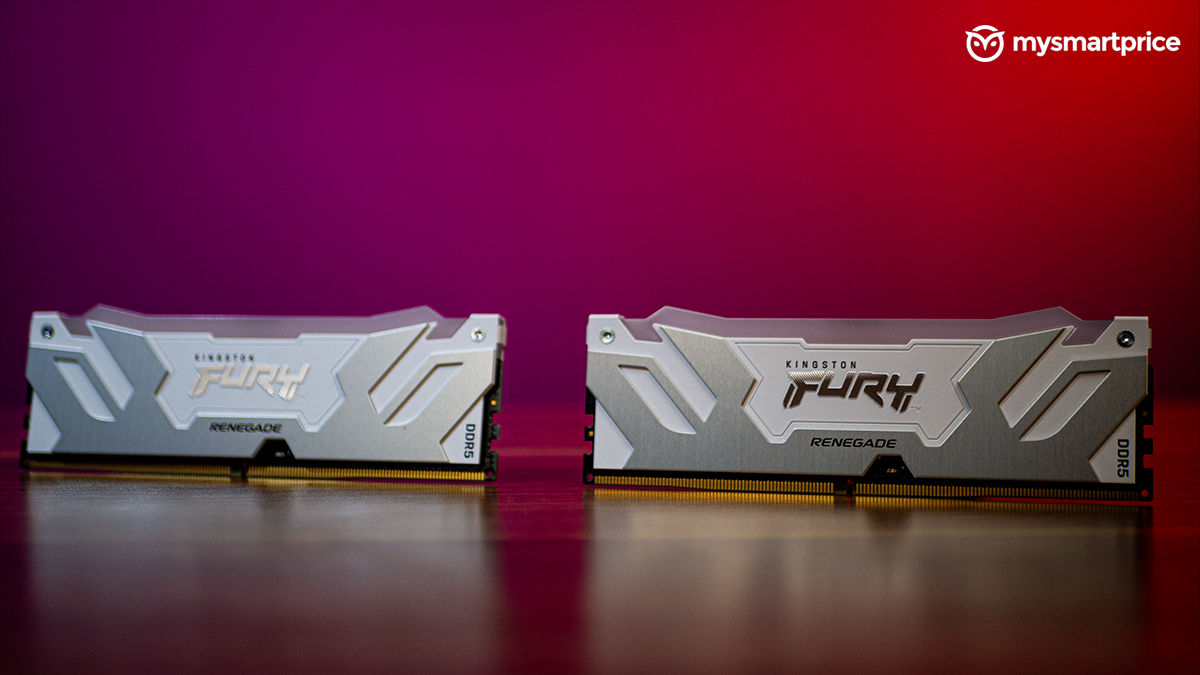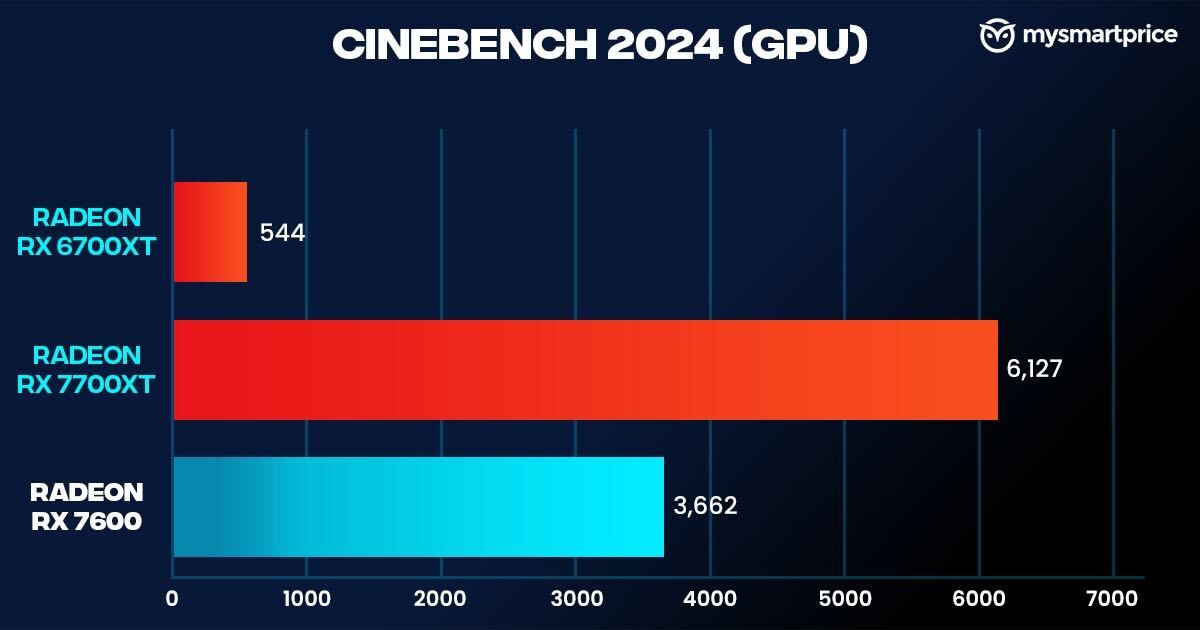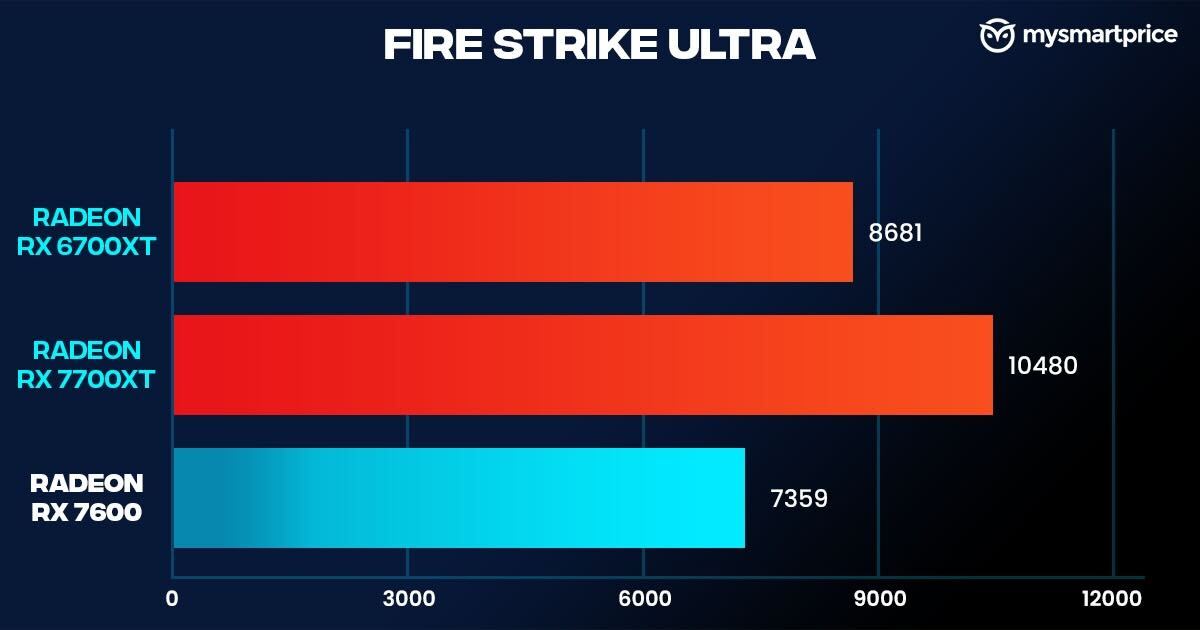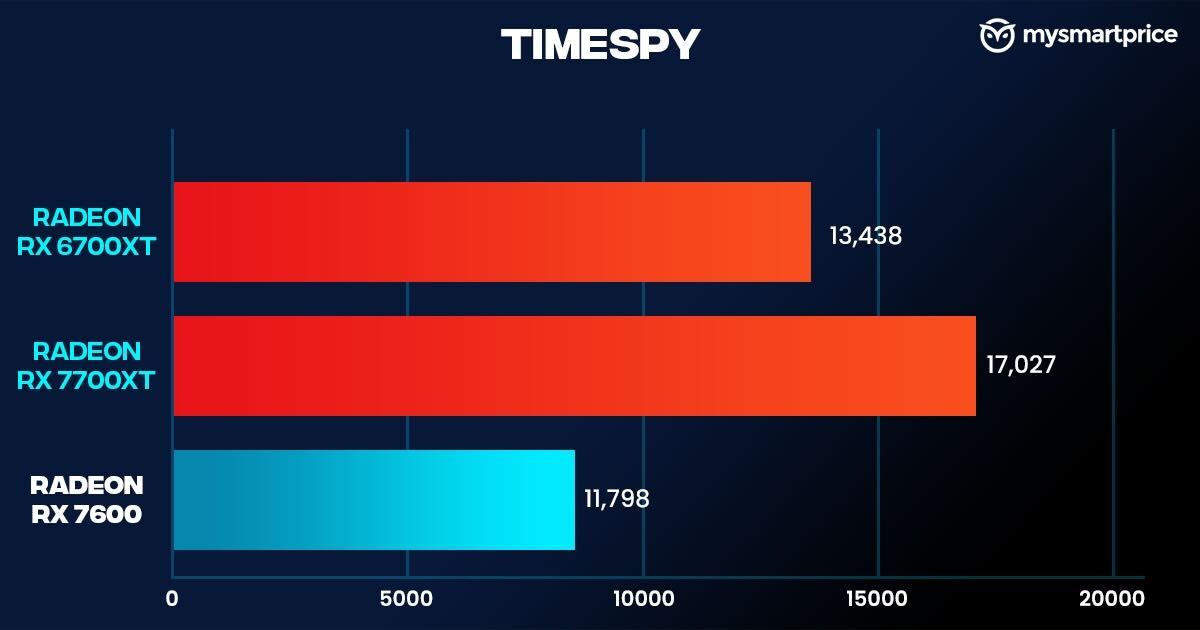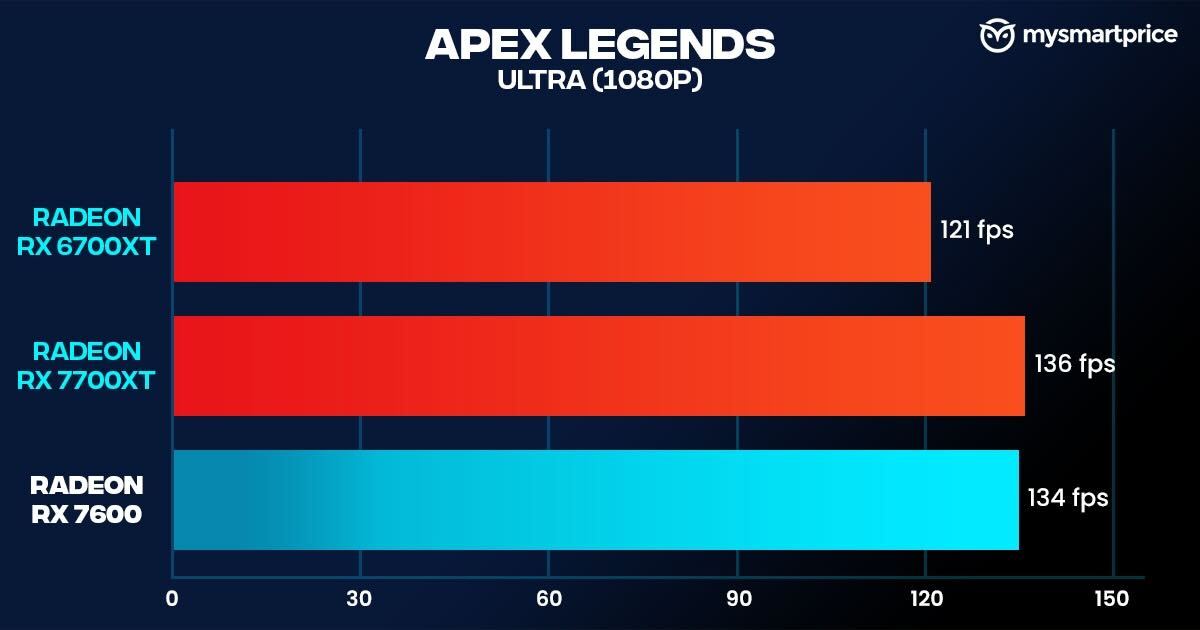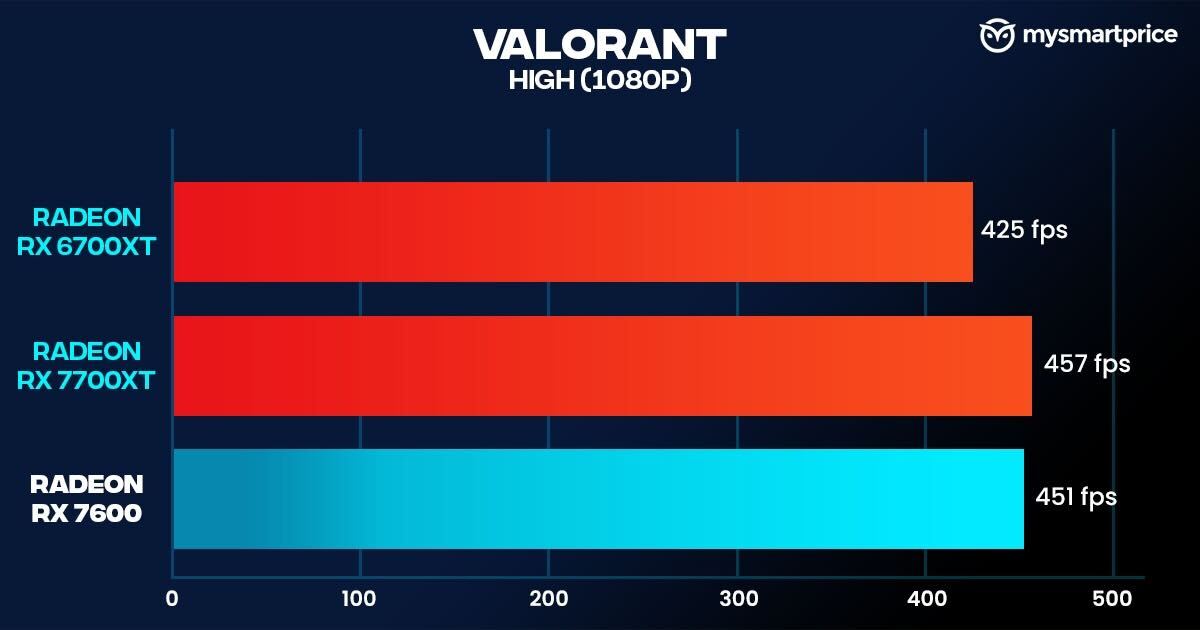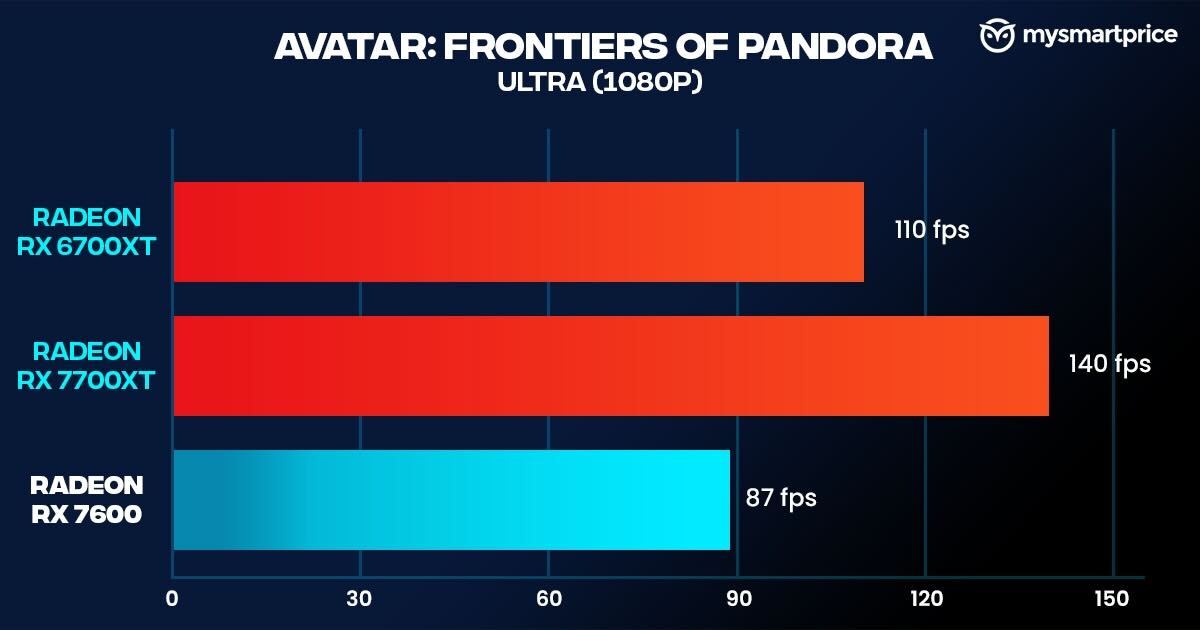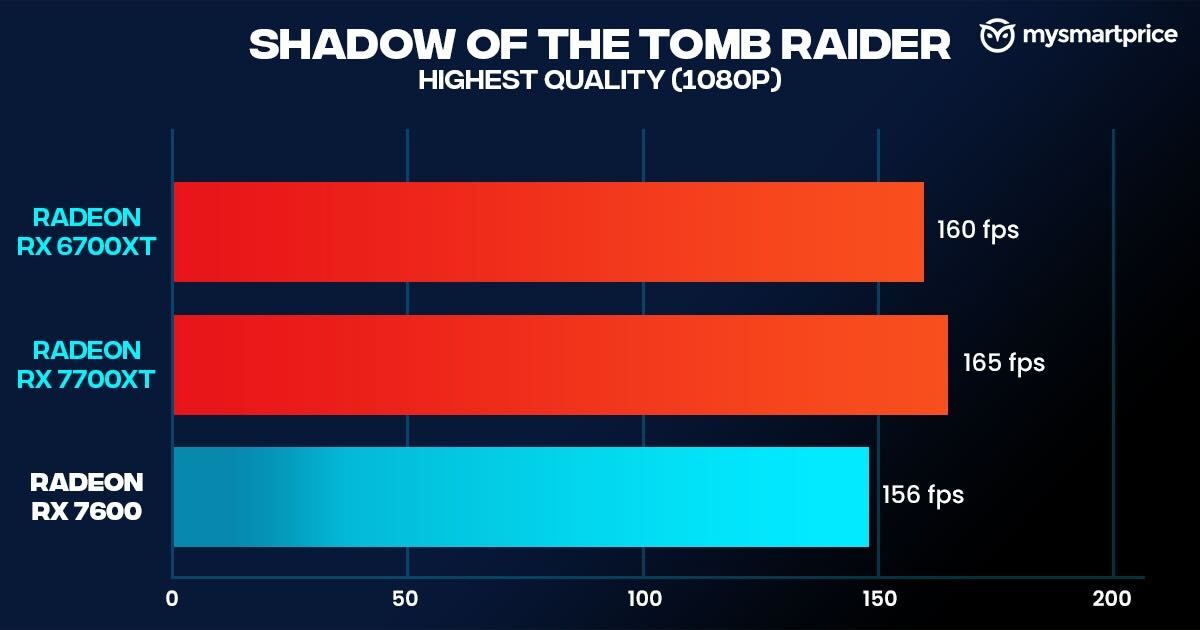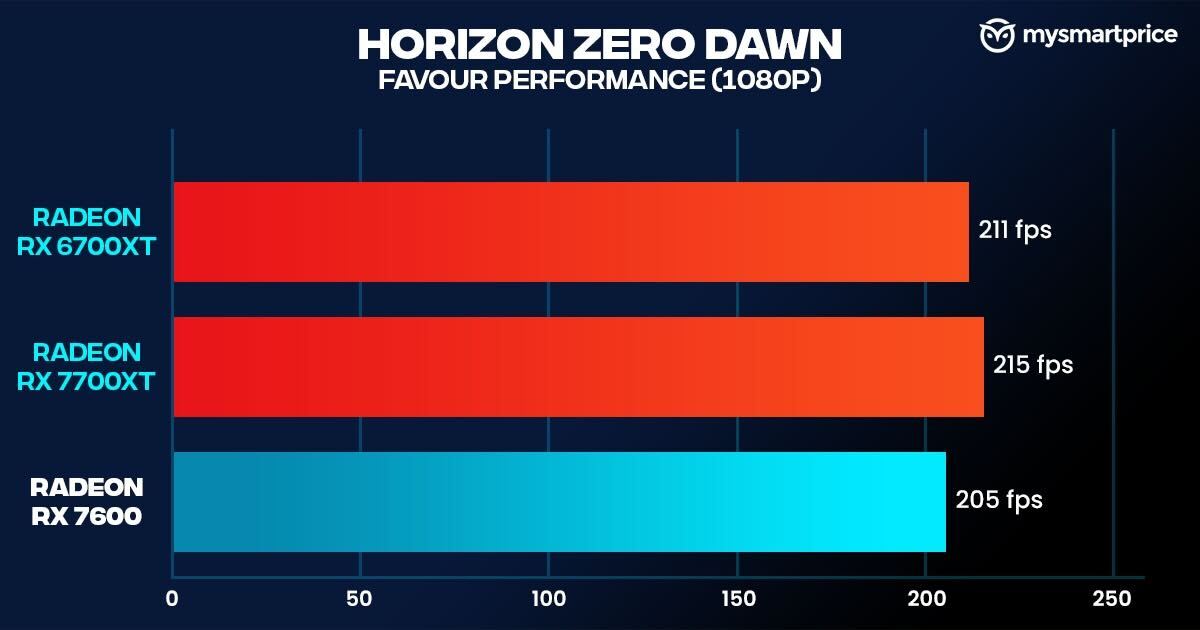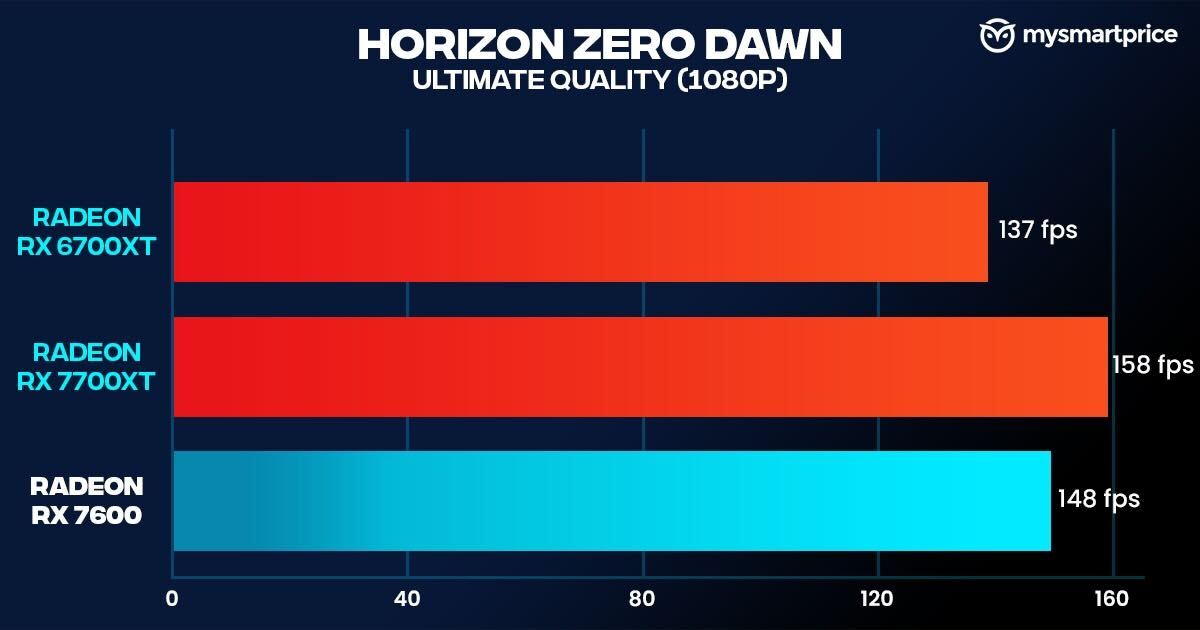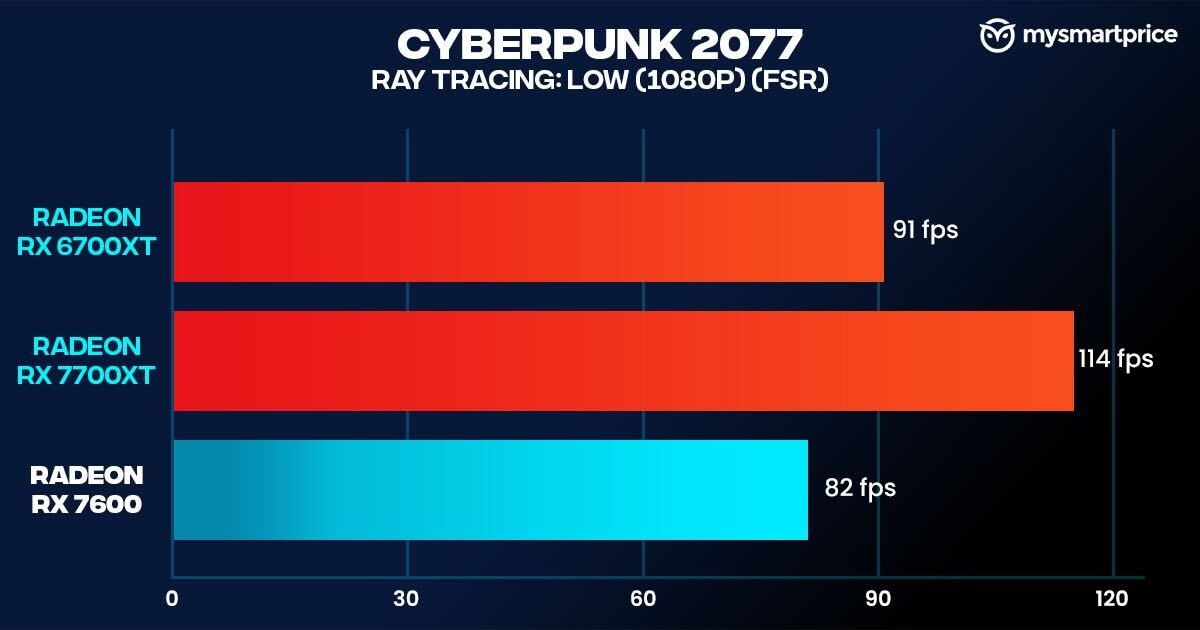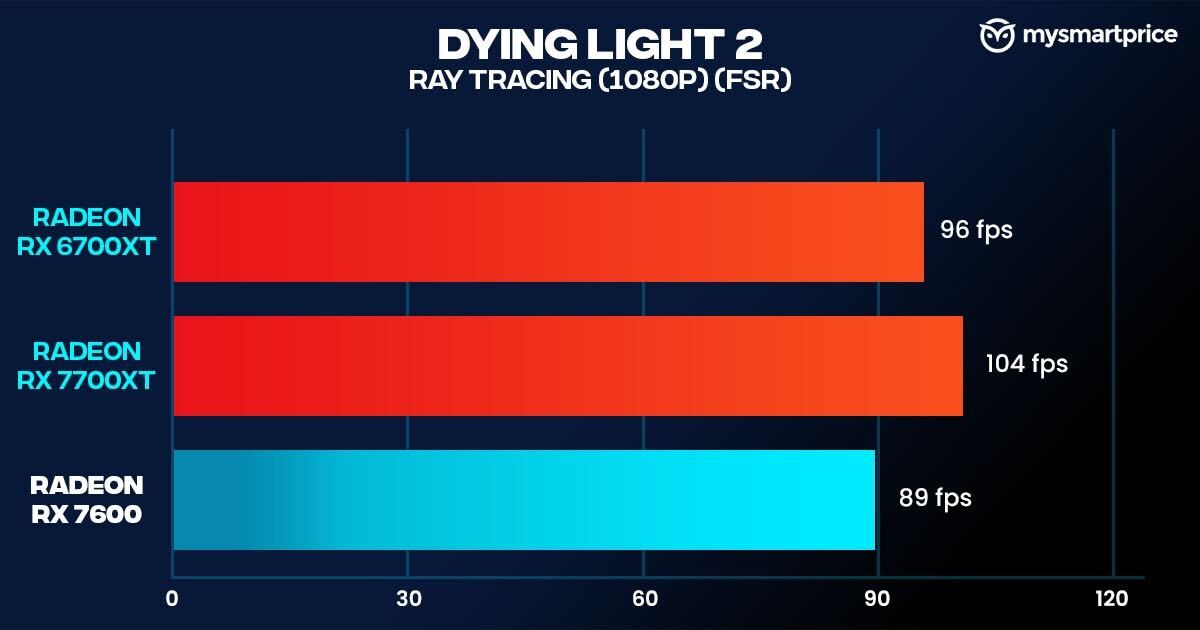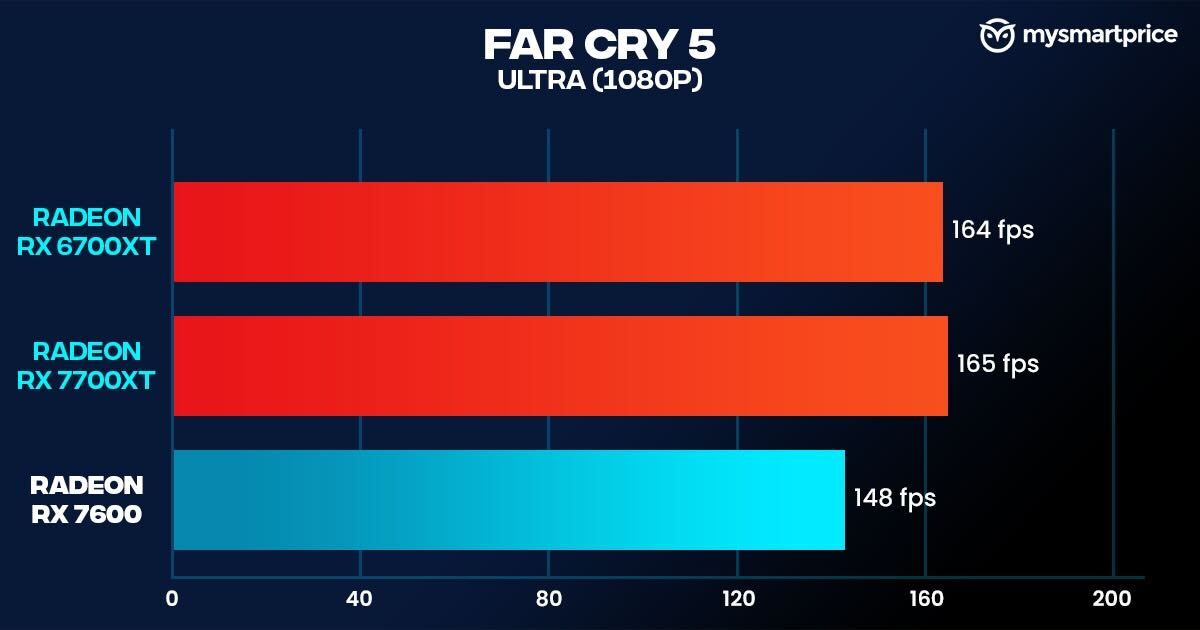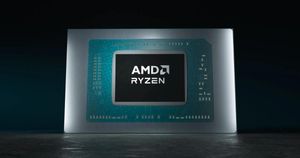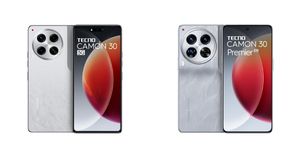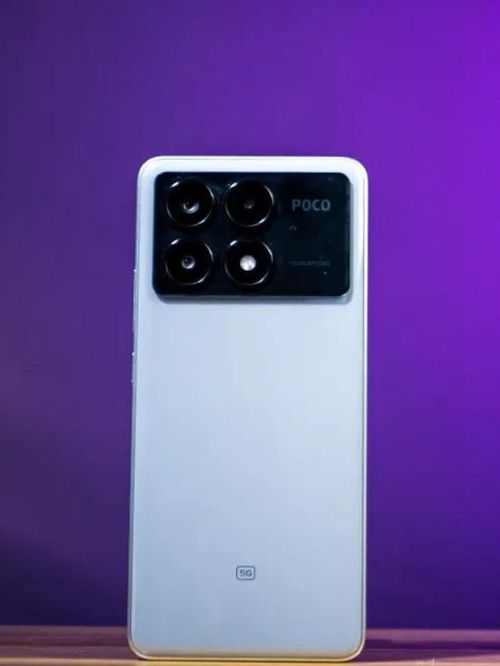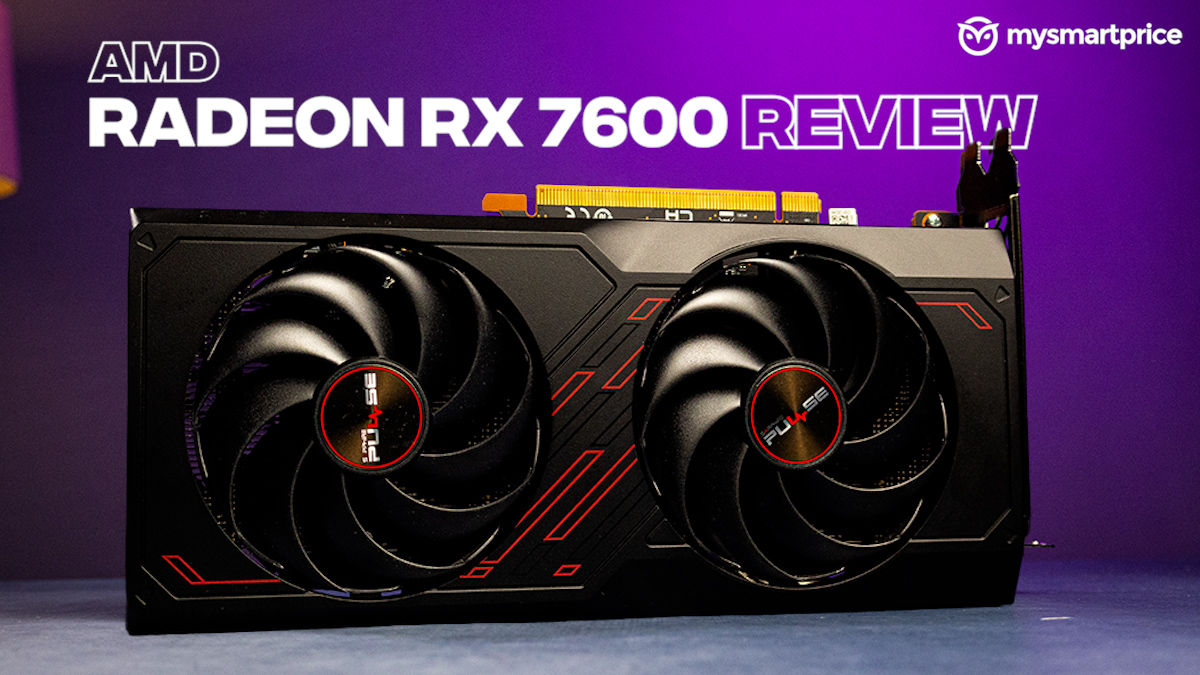
After seeing graphics cards that could double up as coffee tables, I never thought I would see a compact GPU again — until I unboxed the RX 7600. AMD’s Radeon 7000 series covers a wide range of price brackets. The RX 7600, particularly, is a successor to the RX 6600 and is aimed at budget 1080p gamers. With a price tag of around Rs 25,000, the card faces tough competition not only with its predecessors but also against the green team.
AMD Radeon RX 7600
Rs 25,800What Is Good?
- Compact and sturdy design
- Dual-fan card runs quiet
- FSR 3 (now) available
- Well-priced, good value for money
- Great and consistent 1080p performance
- Decent set of ports
What Is Bad?
- Ray-tracing performance isn’t extraordinary
- 8GB VRAM and 128-bit interface will not be suitable for future use
- No RGB might be a dealbreaker for entry-level buyers
Long story short, the RX 7600 performs well in its duties and is, in fact, a bang for your buck — but there are of course some shortcomings. Moreover, the buying choice of the card does not entirely depend on its performance — it relies on how well it is priced. Let’s take a deeper look at the RX 7600 in this review.
Sapphire Pulse AMD Radeon RX 7600 Review: Pricing and availability in India
If you are in the market for the RX 7600, you’ll get multiple options from different manufacturers.
As of writing this review, the GPU is priced around the Rs 25,000 price range. I have curated a table for a quick look at the price across Amazon India, PrimeABGB, and MDComputers. The price difference between all of them is marginal. You might be able to crack an even better deal in the offline market, so get off your gaming chair and hit the retail shops to get a wider idea of the pricing.
| Platforms | ASRock Radeon RX 7600 | Sapphire Pulse Radeon RX 7600 | Asus Radeon RX 7600 | Asus ROG Strix Radeon RX 7600 | MSI Radeon RX 7600 |
| Amazon India | Rs 23,988 | Rs 26,488 | Rs 28,490 | Rs 30,997 | Rs 30,899 |
| MDComputers | Rs 25,405 | Rs 25,800 | NA | NA | NA |
| PrimeABGB | Rs 26,500 | Rs 26,502 | Rs 29,027 | NA | NA |
Sapphire Pulse AMD Radeon RX 7600 Review: Design
The Sapphire Pulse card has a subtle and subdued design, similar to the Radeon RX 7700XT that I reviewed recently. It has the same black and red accents and does not carry any RGB bling. While I really don’t have any issues with the card skipping out on that, entry-level gamers buying their first-ever GPU in the form of the RX 7600, might be a bit disappointed.
None of the other cards from the list above come with RGB, except for the Asus ROG Strix — but that also requires you to shell out a few more bucks. The RX 7600 is unlike recent cards — it’s compact, cute, and lightweight. It also follows the dual-fan approach for keeping the card cool and silent. It’s around 8 inches in length, so it can easily fit into a mid-tower cabinet and can also be used for more compact builds.

The build quality is sturdy, with an all-aluminium backplate, giving good heat dissipation as well. It comes with a PCIe 4.0 x8 slot and draws power through an 8-pin PCIe power connector for energy. It comes with your standard set of ports — three DisplayPort 2.1 and one HDMI 2.1.
Sapphire Pulse AMD Radeon RX 7600 Review: Specifications
The RX 7600 is based on the RDNA 3 architecture, similar to the other cards in this series. The card has 32 compute units, which is four more than the RX 6600, but eight less than the RX 6700XT.

The RX 7600 features 128 texture mapping units, which is more than the competitively priced Nvidia RTX 3060. The card also comes with 64 render output units (ROP) and 8GB of GDDR6 VRAM. AMD’s reference card runs at a boost clock speed of 2655MHz, while the Sapphire Pulse card that I have here can go all the way up to 2755MHz.
| RX 7600 | RX 6600 | RX 6700XT | RTX 3060 | |
| Architecture | RDNA 3 | RDNA 2 | RDNA 2 | Ampere |
| Transistor count | 13.3 billions | 11.1 billions | 17.2 billions | 13.25 billions |
| Memory bus | 128-bit | 128-bit | 192-bit | 128-bit |
| ROPs | 64 | 64 | 64 | 48 |
| Memory | 8GB GDDR6 | 8GB GDDR6 | 12GB GDDR6 | 8GB GDDR6 |
| TBP | 165W | 132W | 230W | 170W |
| Processing cores | 2048 Stream Processors | 1792 Stream Processors | 2560 Stream Processors | 3584 CUDA cores |
| Boost frequency | Up to 2655MHz | Up to 2491MHz | Up to 2581MHz | Up to 1780MHz |
The RX 7600 comes with a 128-bit interface and up to 288 GB/s memory bandwidth. While the interface is sufficient as of now, the card may suffer in the future. The RTX 3060 also comes with the same bus bandwidth. However, the higher VRAM variant comes with a 192-bit interface. The RX 7600 also gets an upper hand over the green team with a much better boost speed.

AMD has also added a 32MB Infinity Cache to the RX 7600. It essentially stores needed data in the GPU’s cache itself, saving time for predictable tasks. In comparison, the older \RX 6700XT has 96MB of Infinity Cache, so it will be able to store more data. The RX 7600 is also one of the cheapest cards to come with FSR 3 (FidelityFX Super Resolution 3). Sadly, the testing data I have is before the upscaling technology was pushed out officially, so I couldn’t test Frame Generation on the RX 7600.
Our Test Bench
For this review, I tested the RX 7600 and the RX 6700XT on the same rig, to give you a head-to-head comparison between the two.
| CPU | Intel Core i5-14600K |
| Motherboard | Asus ProArt Z690-Creator Wi-Fi |
| RAM | Kingston’s Fury Renegade 7200MT/s (32GB) |
| SSD | WD Blue SN580 NVMe SSD (1TB) |
| PSU | Antec NeoEco 850W PSU |
| Cabinet | Antec AX90 |
| Software | Windows 11 |
The Z690 Creator boasts an impressive array of features tailored towards creative professionals. Its design language reflects this target demographic, featuring an integrated I/O shield and a comprehensive selection of back panel ports like a 10 Gb & 2.5 Gb ethernet, a USB 3.2 Gen 2×2 front panel connector, Thunderbolt 4 USB Type-C ports, and a bunch of USB 3.2 Gen 2 Type-A ports. Additionally, the motherboard offers support for WiFi 6E and Bluetooth 5.3.
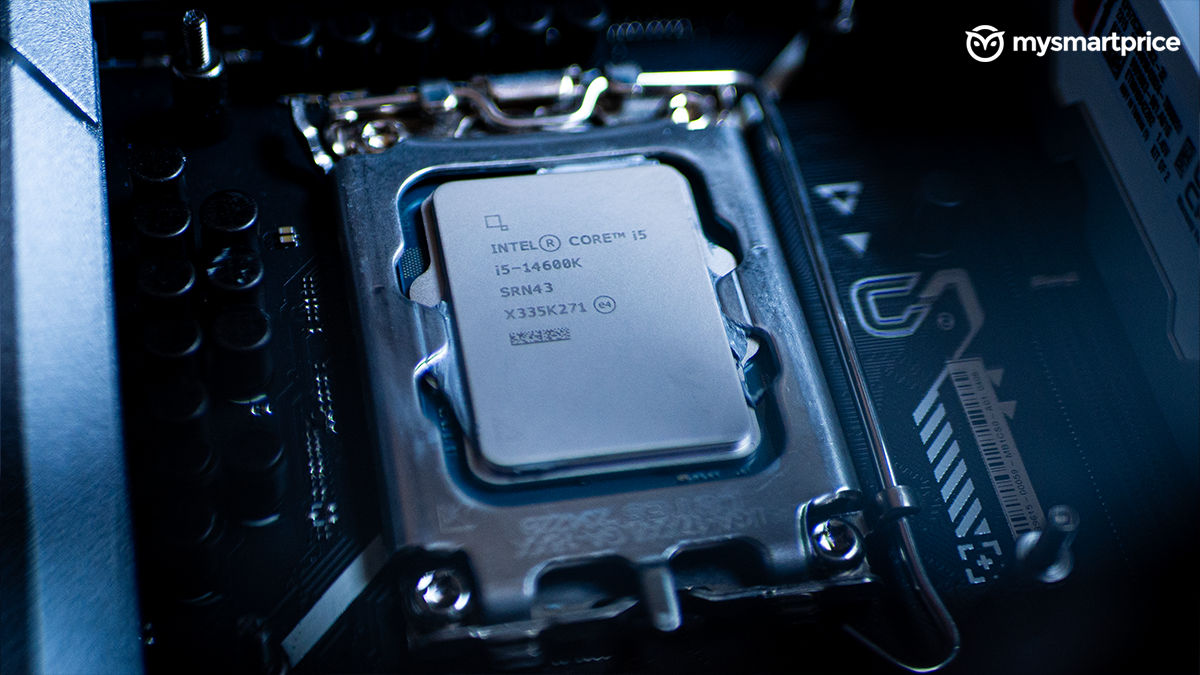
The Intel Core i5-14600K can be a good option if you are looking to pair this budget card with a mid-range CPU. Out of the four RAM slots, we filled up two with a total of 32GB of Fury Renegade sticks. The cooling part was handled by the Antec Vortex 360 AIO cooler, while the Antec NeoEco 850W PSU provided ample power.
Storage was handled by the WD Blue SN580 NVMe SSD, sitting under a heatsink. All components were housed within the Antec AX90 cabinet. The tests were conducted on a fresh installation of Windows 11, with all available patches and drivers updated.
Sapphire Pulse AMD Radeon RX 7600 Review: 1080p Performance
While I did not have access to the Nvidia cards mentioned in the table above, I was able to compare the RX 7600 against the RX 6700XT, so you should get an idea as to how the cards perform in their respective price ranges. The RX 7600 lies around the Rs 25,000 price range, while the RX 6700XT can be found around Rs 32,000. However, one of the biggest factors to consider here is that the RX 7600 comes with 8GB VRAM, while the RX 6700XT has 12GB VRAM.
With that out of the way, the RX 7600 performs well in all the benchmarks, in fact coming quite close to the RX 6700XT in some cases. The card also handles games such as CyberPunk 2077, Avatar: Frontiers of Pandora, Shadow of the Tomb Raider, and more. While it does well to handle the game in high graphics settings, Ray-tracing is where we can see minor dips in the numbers.
Benchmarks
The RX 7600 scores about 11,798 in the TimeSpy test. For context, the RX 6700XT scores about 13,438, while the RX 7700XT which is about Rs 20,000 costlier scores around 17,027.
The Cinebench 2024 GPU tests yielded a score of 3662 on the RX 7600, while the RX 6700XT received an abnormal score of 544. The differences between the RX 6700XT and RX 7600 in Fire Strike Ultra and Port Royal are also marginal, as you can see in the graphs.
Gaming performance
The RX 7600 handles first-person shooters like Counter-Strike 2, Apex Legends, and Valorant with ease, hitting satisfactory numbers. In intensive games such as Dying Light 2, it manages to gain a 7 per cent lead over the RX 6700XT with the graphics set at high. However, it slightly falls behind when Ray-tracing is brought into the conversation. The same pattern can be noticed with CyberPunk 2077. That said, these numbers are still quite good for 1080p gaming.
However, it’s not all roses for the RX 7600. The limited memory and bus bandwidth start to show its signs with games such as Avatar: Frontiers of Pandora. The card considerably falls behind the RX 6700XT with a 23 per cent difference with the graphics set to Ultra. This is lowered to around 17 per cent if the graphics are bought down to the high preset.
The card performs equally well in games such as Shadow of the Tomb Raider and Horizon Zero Dawn. The GTA V’s built-in benchmark also yielded good results. I was only limited to a 1080p monitor, so I could not test the RX 7600’s 1440p output. However, like I spoiled earlier, the RX 7600 is a great choice for 1080p gamers. With FSR enabled, Cyberpunk 2077 saw an increase of 21 per cent with the Ultra graphics preset, this is a considerable improvement.
FSR also produced good results with Ray-tracing enabled on Dying Light 2, getting the game to reach around the 89fps mark. Overall, the game ran smoothly without any sudden spike in temperatures or any drops in the frames.
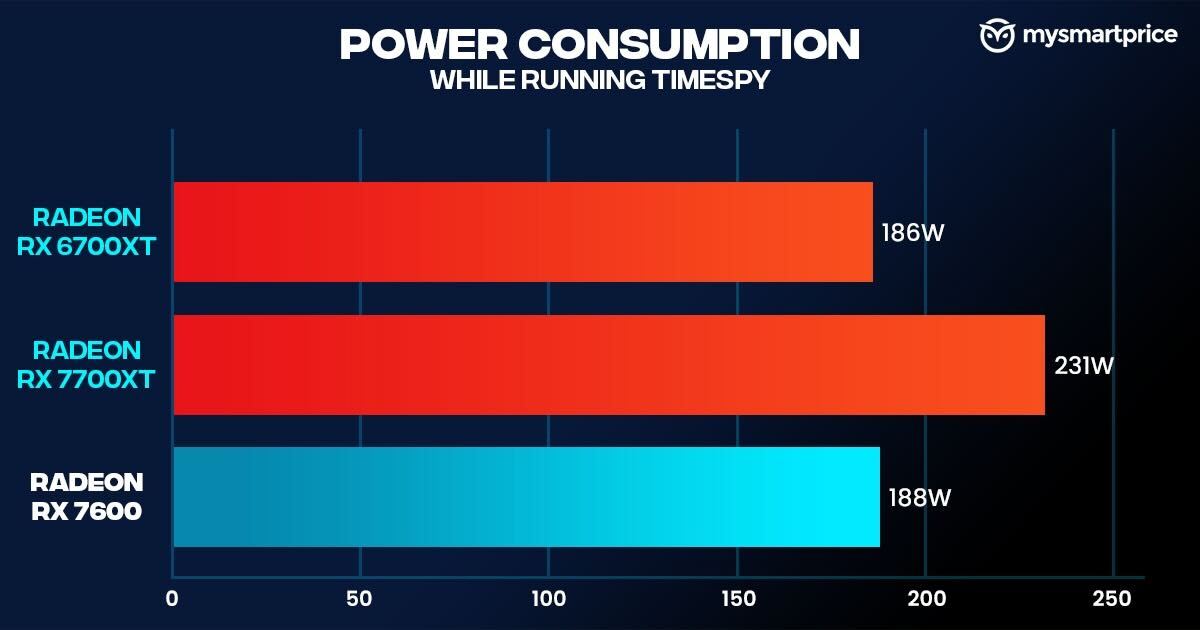
The RX 7600 runs quiet and cool even under intensive workloads such as rendering videos, playing games, or during benchmarks. While the GPU is rated at 165W board power, the card managed to reach about 188W during the TimeSpy benchmark test, which even exceeds the RX 6700XT numbers.
Sapphire Pulse AMD Radeon RX 7600 Review: Verdict
While the RX 7600 was priced absurdly during its launch period, the current price makes it a good deal for gamers looking to buy their first-ever graphics card. The GPU does not come out with exceptionally groundbreaking results in our benchmarks, but one thing to note is that it’s consistent. When it comes to Ray-tracing performance, the RX 7600 falls behind slightly, if this is of more value to you, looking at RTX counterparts might be a better choice for you as Nvidia still seems to have an upper hand in this regard.

The RX 6700XT is another great option for 1080p gaming with more VRAM and bus bandwidth, however, keeping the price difference between the two in mind, the performance gains feel insignificant. The card might not win any medals when it comes to power efficiency, but it runs comparatively quiet even during heavy workloads, which is worth noting. Moreover, the compact size of the card widens its horizon for different types of build. With the implementation of FSR 3 and Frame Generation, AMD might be on to something, even with budget cards such as this one.
Sadly, I could not compare the RX 7600 with any of the green team cards for this review, but if you are looking for a reliable and consistent 1080p card for your budget build, the RX 7600 stands as a great option that is priced right.




